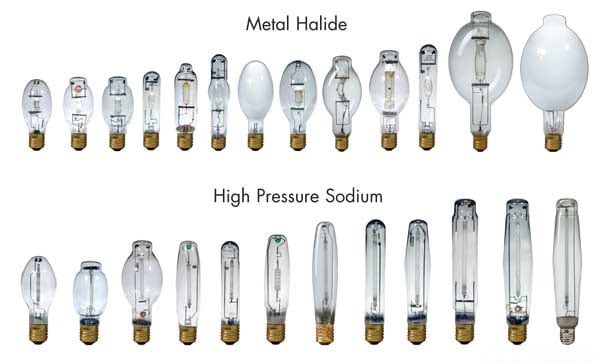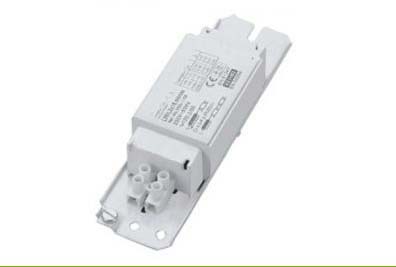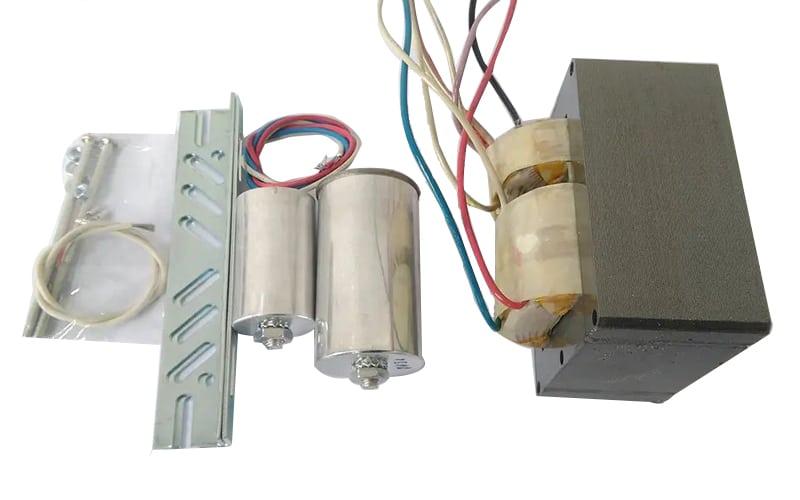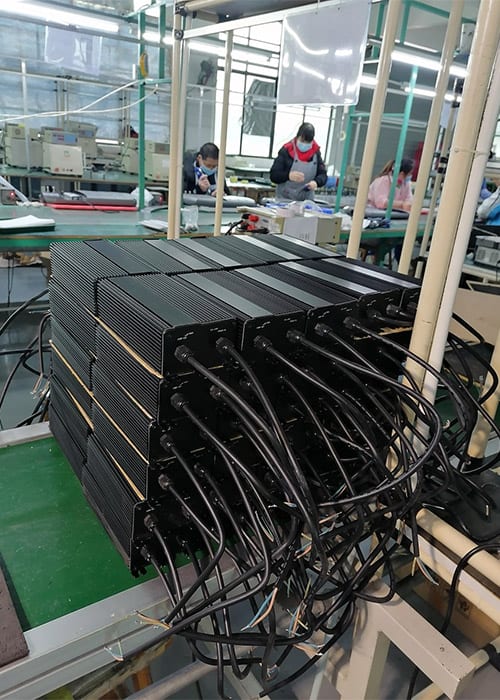In lighting systems, especially those using fluorescent and high-intensity discharge (HID) lamps, there are several different parts that work together to make sure your lights work well and are safe. Some of these parts are the choke, the ballast, and the igniter. Each one does something different to control the electricity, make sure the electricity goes through the bulb, and give the bulb a little electrical push to get started.
The choke controls the electricity and makes sure the right amount goes through the bulb. The ballast controls the electricity and makes sure the right amount goes through the bulb. The igniter gives the bulb a little electrical push to get started. You need to know what each of these does if you’re going to work with lighting systems, whether you’re doing it at home, at a business, or in a factory.
Now, let’s talk about how these things work, what they do, and how they’re different from each other.
What Is a Choke and How Does It Work?
A choke is essentially an inductor that limits or controls the current flowing through a circuit. It is used in older lighting systems, particularly in fluorescent and mercury vapor lamps, to prevent excessive current from flowing into the lamp once it is ignited.
Definition and Function
The choke is an inductive device that stores energy in its magnetic field and opposes sudden changes in current. When the fluorescent or mercury vapor lamp is powered on, a choke helps control the initial surge of electricity that occurs when the lamp ignites. After the lamp is lit, the choke stabilizes the current flow, preventing it from rising too high and damaging the lamp.
Use in Fluorescent Lighting
In traditional fluorescent lamps, a choke is used as part of a simple system to regulate current. When the fluorescent tube is switched on, a starter generates an arc that ionizes the gas inside the tube, creating light. The choke’s role is to limit the current that flows after the arc is formed, ensuring that the light operates efficiently without drawing too much power.
Advantages and Limitations
Chokes were popular in older lighting systems because they were simple and reliable. However, they are not as energy-efficient as modern electronic components, and they tend to generate heat. While chokes are still found in some applications, they are increasingly being replaced by electronic ballasts, which are more efficient and offer better control over the lighting process.
What Is a Ballast and How Does It Work?
A ballast is an essential component in lighting systems that use high-intensity discharge (HID) or fluorescent lamps. Its primary job is to regulate both the voltage and current supplied to the lamp. Without a ballast, the lamp would either fail to start or be damaged by an uncontrolled surge of current.
Definition and Function
A ballast provides two key functions:
- Starting the Lamp: When the lamp is switched on, the ballast supplies the high voltage needed to initiate the arc between the electrodes inside the lamp.
- Regulating Current: Once the lamp is lit, the ballast ensures that the current flowing through the lamp remains at a safe, consistent level, preventing it from overheating or burning out.
Ballasts are essential for HID lamps (such as Metal Halide (MH) or High-Pressure Sodium (HPS) lamps) and many types of fluorescent lamps. These lamps need a regulated current and voltage to operate correctly, which is what the ballast provides.
Types of Ballasts
There are two primary types of ballasts used in lighting systems:
- Magnetic Ballasts: These are older, simpler designs that rely on inductive coils and magnetic fields to regulate current. They are robust and relatively inexpensive but tend to be less energy-efficient. Magnetic ballasts also produce more heat and can cause the lamp to flicker or hum.
- Electronic Ballasts: Modern lighting systems often use electronic ballasts, which regulate the current using electronic circuits. These ballasts are more efficient, produce less heat, and allow for more control over the light output. They also operate at higher frequencies, which eliminates flicker and reduces noise.
Role in Lighting Systems
Ballasts are used across a variety of lighting systems, from fluorescent tubes to HID lamps. Their job is to ensure that the light starts properly and operates at a stable, safe power level throughout its lifespan. Without a ballast, the lamp would either draw too much current and burn out or not start at all.
What Is an Igniter and How Does It Work?
An igniter is a device used primarily in HID lamps. Its function is to provide the initial high-voltage pulse that is necessary to start the lamp. Unlike fluorescent lamps, HID lamps require an intense electrical spark to create an arc inside the lamp that ionizes the gas and produces light.
Definition and Function
The igniter works by generating a very high voltage pulse (often several thousand volts) when the lamp is switched on. This pulse is strong enough to break down the gas inside the lamp, allowing the arc to form between the electrodes. Once the arc is established, the ballast takes over, regulating the current and keeping the light stable.
Use in HID Lamps
Igniters are primarily used in HID lamps, such as Metal Halide and High-Pressure Sodium lamps. These types of lamps do not start as easily as fluorescent or LED lamps. The igniter works in combination with the ballast to ensure that the lamp starts quickly and operates reliably.
Importance of Timing
One of the critical aspects of the igniter is its timing. The igniter must provide the high-voltage pulse at exactly the right moment during startup. If the pulse is delivered too early or too late, the lamp may fail to ignite. Once the arc is established, the igniter’s job is complete, and the ballast takes over the role of regulating the current.
Key Differences Between Choke, Ballasts, and Igniter
While the choke, ballast, and igniter are all vital components of lighting systems, they serve very different purposes. Here’s a breakdown of their key differences:
Function
- Choke: Controls and limits current in lighting systems, particularly in older fluorescent systems. It prevents surges and stabilizes the current flow.
- Ballast: Regulates both voltage and current in HID and fluorescent lighting systems. It ensures that the lamp starts correctly and operates at a stable power level.
- Igniter: Provides the initial high-voltage pulse needed to ignite HID lamps, such as Metal Halide and High-Pressure Sodium lamps.
Applications
- Choke: Used mainly in older fluorescent lamps and discharge lighting systems to limit current.
- Ballast: Found in both HID lamps (e.g., Metal Halide, High-Pressure Sodium) and fluorescent lamps. Modern electronic ballasts are more efficient and commonly used.
- Igniter: Required in HID lighting systems to generate the spark that initiates the arc inside the lamp.
Technological Differences
- Choke: Primarily an inductive device that limits current.
- Ballast: Can be either magnetic (inductive) or electronic, with modern electronic ballasts offering better control and efficiency.
- Igniter: A specialized high-voltage device that works in conjunction with a ballast to ignite HID lamps.

How These Components Work Together in Lighting Systems
In some lighting systems, these components work together to ensure smooth operation.
Choke and Ballast in Fluorescent Lighting
In older fluorescent systems, a choke and ballast may both be present. The choke controls current, while the ballast ensures the proper voltage is applied to the lamp, helping it start and operate efficiently.
Ballast and Igniter in HID Systems
In HID lighting systems, the ballast and igniter work closely together. The igniter provides the initial high-voltage pulse to start the lamp, and the ballast regulates the current and voltage throughout the lamp’s operation. Without both components functioning properly, the lamp would either fail to start or not operate efficiently.
Importance of Compatibility
It’s essential that the choke, ballast, and igniter are compatible with the lighting system they are being used in. Using an incompatible ballast or igniter could result in a failed startup, poor light output, or even damage to the lamp.

Final Words
While these things might seem the same, each one does something different and important. The choke controls the electricity, the ballast controls the electricity, and the igniter gives certain types of lights a little electrical push to get started. Knowing what each of these does and how they work together will help you make good decisions about your lighting, so it works well and is safe.




